The USB isolator is a device that will pass USB signal from input to output connector, while providing galvanic isolation between them. USB isolators are used in applications where direct USB connection can create noise (ground loop noise to audio or measurement), direct connection can be unreliable (noise to USB signal) or where isolation is needed to protect USB port or for electrical safety (for example laboratory measurement). USB isolators are the professional tools to avoid and fight ground loops and equalizing currents and to protect against overvoltage.
USB isolation works by creating a new ground for the USB device so that it doesn’t have to share ground with your computer (and other devices that you might have connected in your house). This will prevent ground loops. It will also protect the USB device and host from electrical shocks or static electricity shocks. The USB isolators effect a potential decoupling of all USB connections and separate the ‘normal’ PC system from the critical application.
I have thought of getting USB isolator for some time, but many of them seem to be quite expensive (many cost nearly 100 Euros). Then I saw this promising looking Isolator USB to USB Optocoupler Isolation Module Coupled Protection Board ADUM3160 Isolation Voltage 2500V board for around 10 Euros.
12 Mbps support USB 1.5 Mbps at low speed and full speed does not support pure high-speed equipment
Support USB control transfer, bulk transfer, interrupt transmission, synchronous transmission/etc
Power supply: from the USB port to the PC host
Avoid driving, it is more convenient to use
Compatible with USB2.0
ADUM3160 isolation voltage: 2500V
Power module: isolation voltage 1500V
Using the environment: – 40 ° to 85 °
Support Equipment:
-Full speed equipment: USB flash drive, digital camera, card reader, mobile hard disk, U aegis,, USB hub, AVRJTAG, AVRISP, AVRISPMKII, S – Lab, JET51, J – Link, FET430UIF, PICKIT2, XDS100, LPC cc-link, ICD2, USB serial port (FT232, CP2102, PL2303, CH341 chips).
-Low speed devices: Keyboard, mouse, USBASP, USBHID equipment, USBCDC equipment.
Tested part does not support the USB wireless network card, see USB flash drive.
With those specifications this product looks pretty promising.
In my testing I have found that this product corresponds to the description. It is small and simple. It does what it says. The ground is isolated very well. I tested the isolation with insulation resistance meter at 500V DC, and the device withstood that test nicely and meter showed open circuit. Those are the good things.
There are also some disadvantages and limitations on this product as well.
First is that there is no case that comes with this so I had to make my own because I did not like having open USB hardware laying around potentially making short circuit. That was known when I bought this cheap board instead of somewhat more expensive similar device with plastic case.
Other this is the lack of documentation of dip switch function. From the discussion on the product page I read that the DIP switch is for USB bus speed selection. This device support USB Low and full speed data rate: 1.5 Mbps and 12 Mbps. Automatic speed detection would have been nice, but I can live with this manual selection although getting it to work sometimes might need some manual testing which setting is the right. The switch like it is in the pictures selects the isolator to operate at full speed data rate of 12 MBps. If low speed is needed, the DIP switch should be moved to “ON” position.
There is a limitation how much power can go through this device. You can expect to get 1W MAX (0.2A @ 5V) on isolated DC/DC side for USB power. That’s considerably less than typically available from computer USB port, and may not be enough for some power hungry hardware.
This device support only USB Low and full speed data rates 1.5 Mbps and 12 Mbps. It does not support USB 2.0 Hi-Speed 480 MBps, which means that some fast USB device do not work with it.
Circuit analysis:
When looking at the circuit board, I found out that the main active components in it are:
ADUM3160 USB isolator chip
B0505S-1WR2 isolating DC/DC converter
PC817 opto-isolator
The USB data signal isolation on this device is based on ADuM3160 component which is a USB port isolator based on Analog Devices, Inc., iCoupler technology. The chip uses high speed CMOS and monolithic air core transformer technology. ADuM3160 promises isolation voltage 2500V.
ADUM3160 data from https://www.analog.com/en/products/adum3160.html#:
USB 2.0 compatible
Enhanced system-level ESD performance per IEC 61000-4-x
4.0 V to 5.5 V operation
Low and full speed data rate: 1.5 Mbps and 12 Mbps
High common-mode transient immunity: >25 kV/μs
Evaluation Board and User Guide available
16-lead SOIC wide body package
Safety and regulatory approvals
UL recognition: 2500 V rms for 1 minute per UL 1577
CSA Component Acceptance Notice #5A
IEC 60950-1: 400 V rms (reinforced)
VDE certificate of conformity
DIN V VDE V 0884-10
(VDE V 0884-10):2006-12
VIORM = 560 V peak
B0505S is the DC/DC converter module used to convert USB 5V to isolated 5V for the other USB connector. B0505S is 1WR2 DC-DC Power Supply Module 5V to 5V Isolation Chip DIP-4. The product page at https://www.banggood.com/B0505S-1WR2-DC-DC-Power-Supply-Module-5V-to-5V-Isolation-Chip-DIP-4-p-1526388.html?rmmds=buy&cur_warehouse=CN says that the B_S-1WR2 family is specifically designed for applications in the board power system that require a set of voltages that are isolated from the input supply. This product is suitable for to:
1. The input power supply voltage is relatively stable (voltage variation range ±10% Vin);
2. Requirements isolation between input and output (isolation voltage ≤ 1500VDC);
3. The output voltage stability and output ripple noise are not high.
PC817 is a very common opto-isolator chip. It can provide up to 5000V isolation and operate up to 80 kHz frequency. In this circuit the opto-isolator seems to be just transfer the speed selection information from one side to another. The data PC817 sheet is available at https://learnabout-electronics.org/Downloads/PC817%20optocoupler.pdf
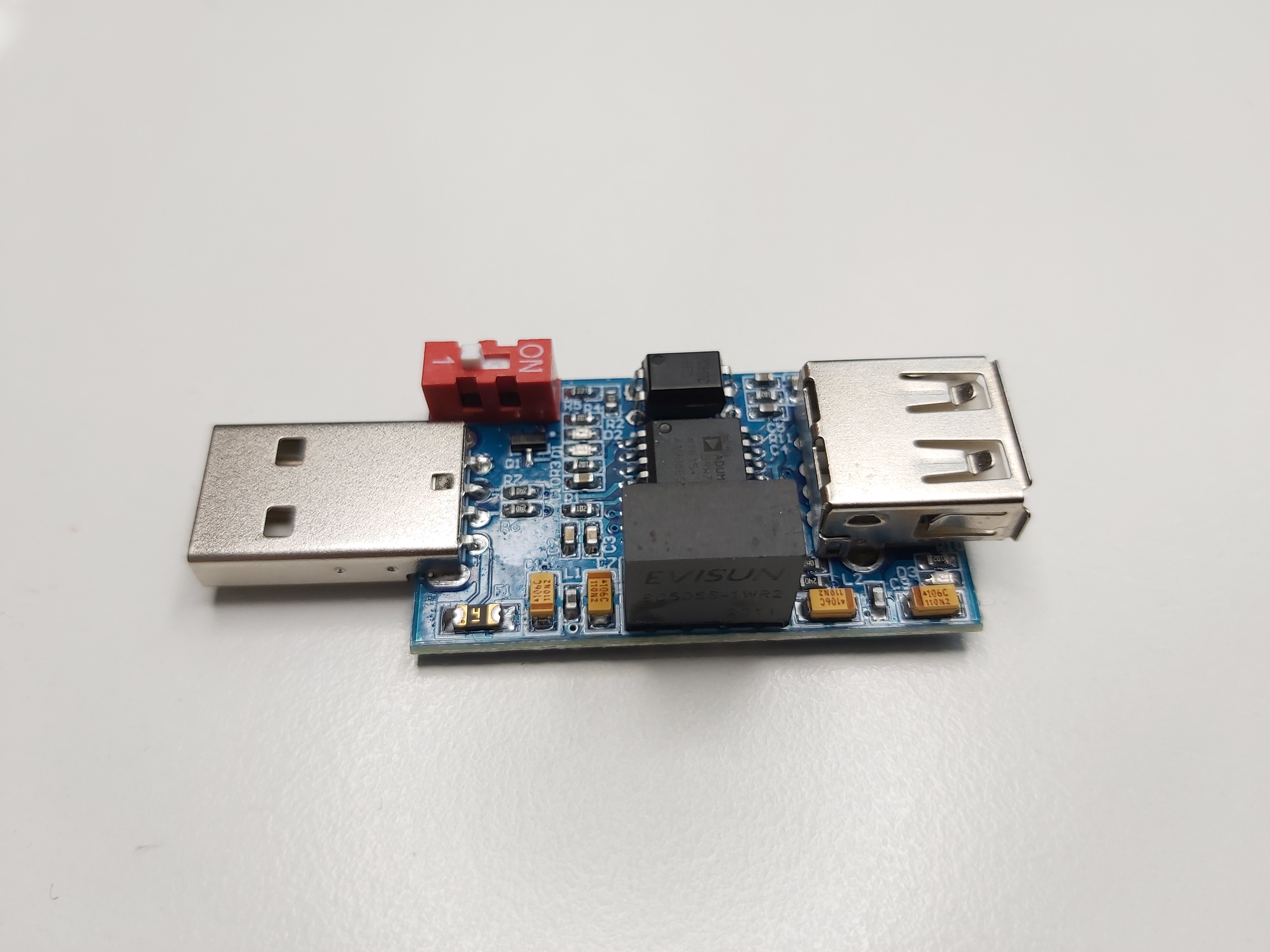
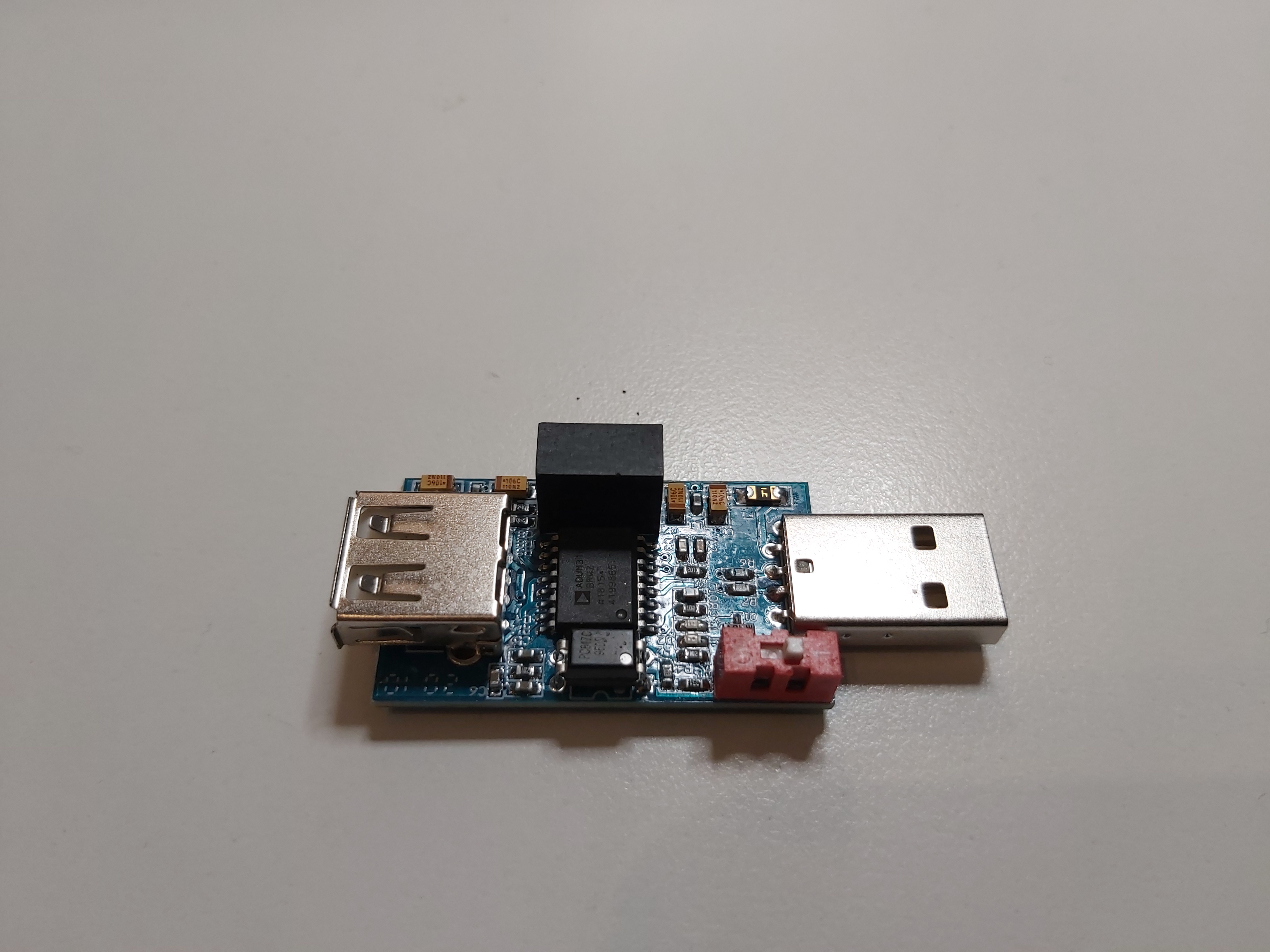
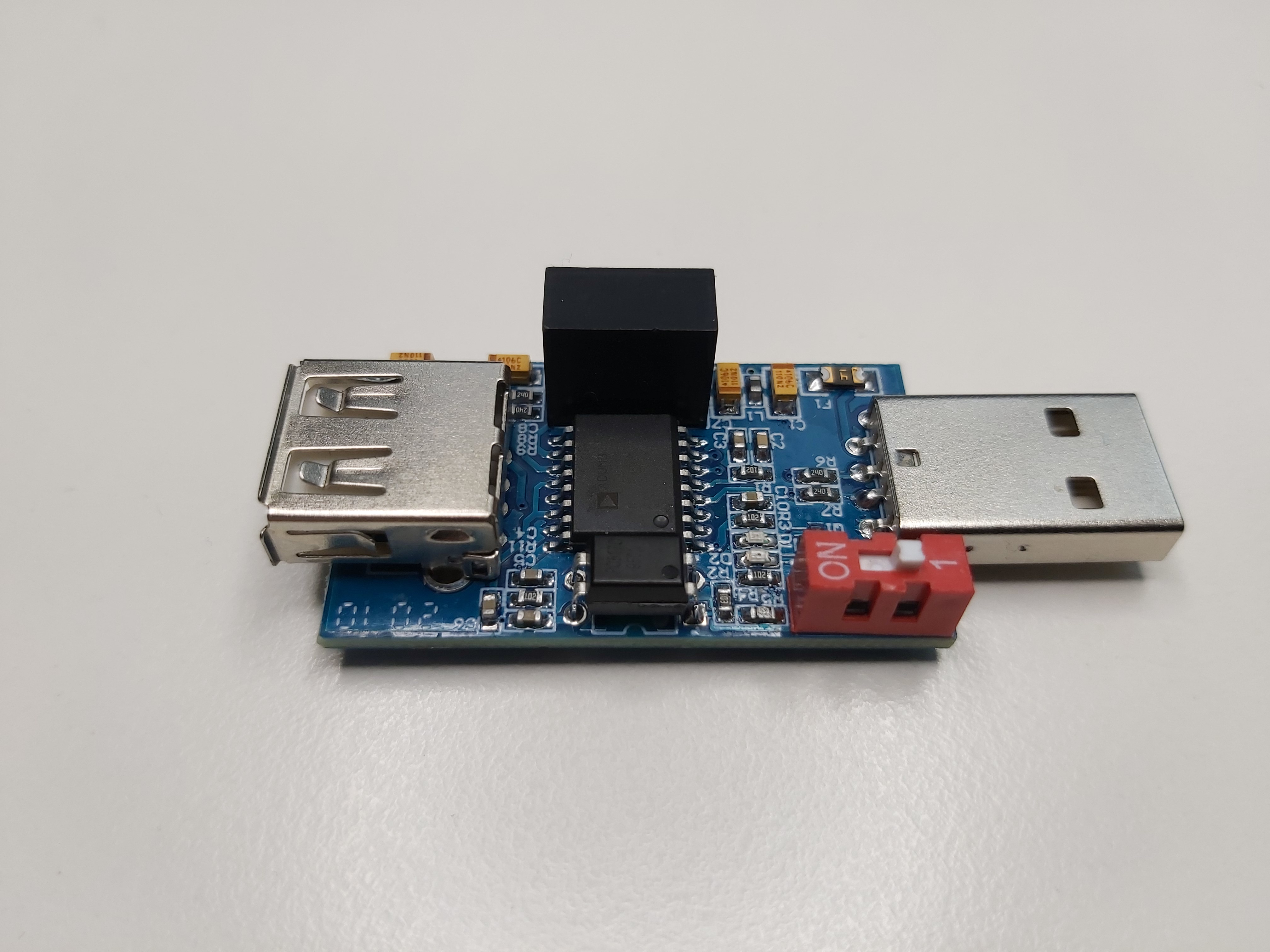
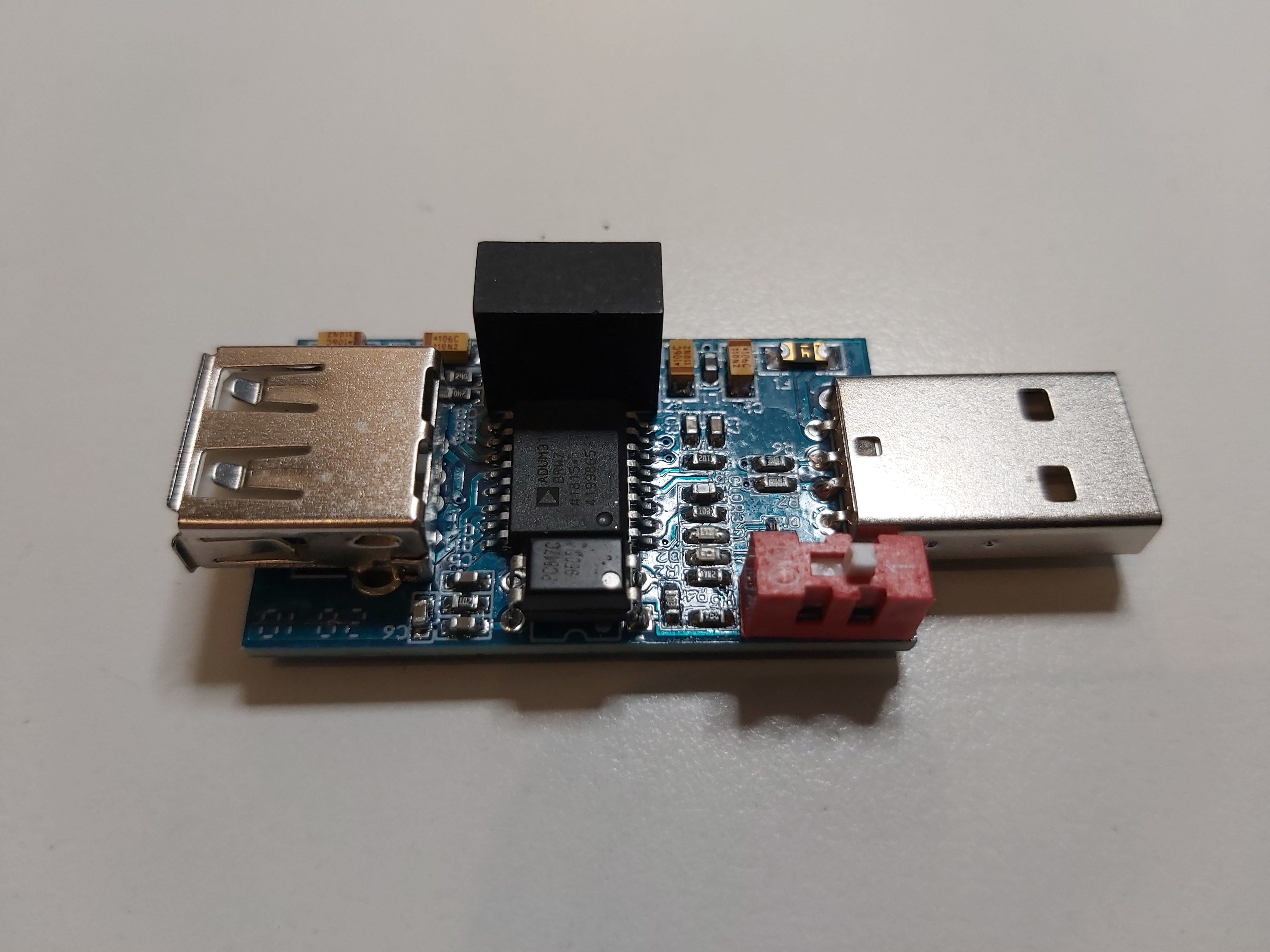
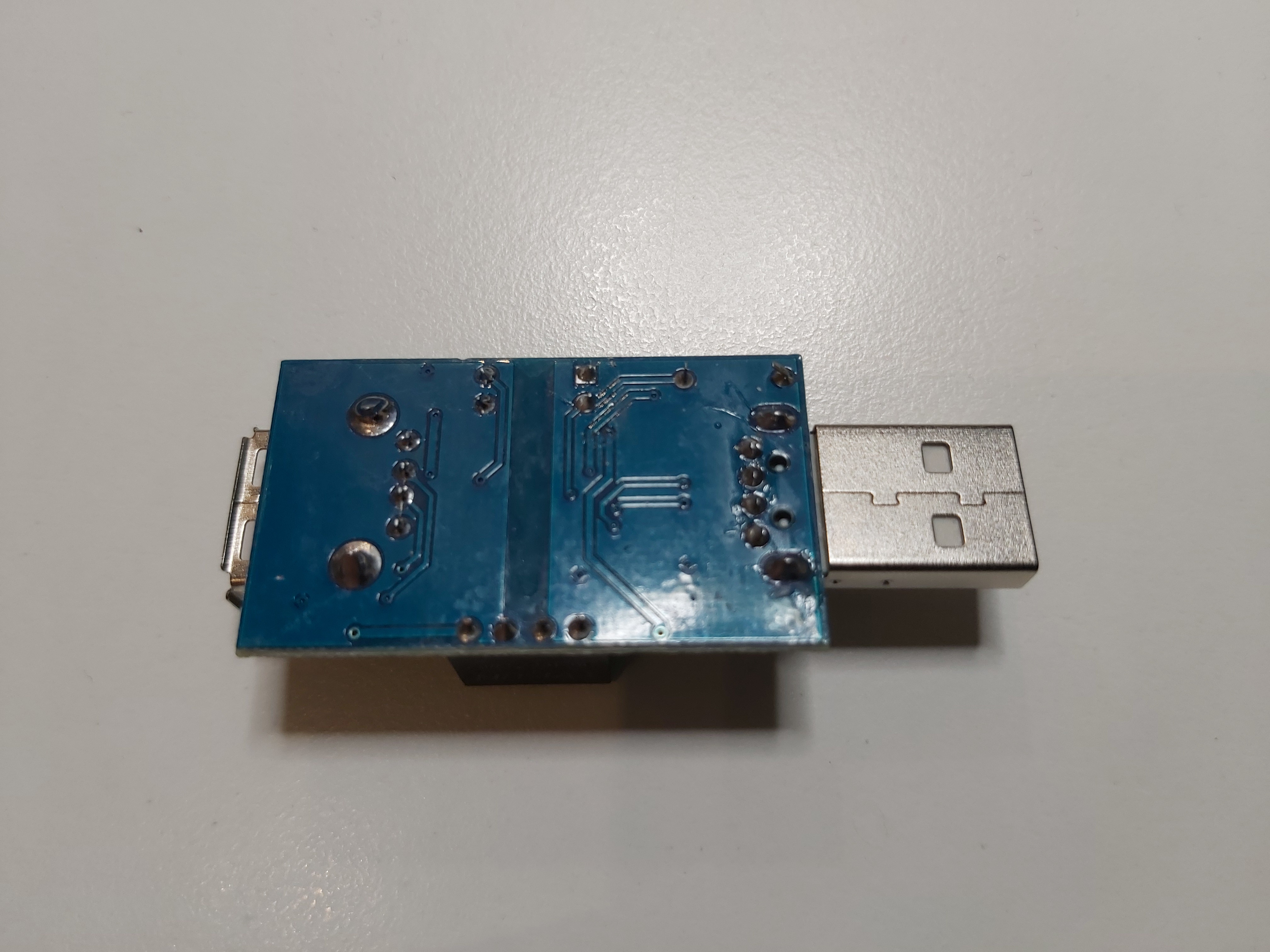
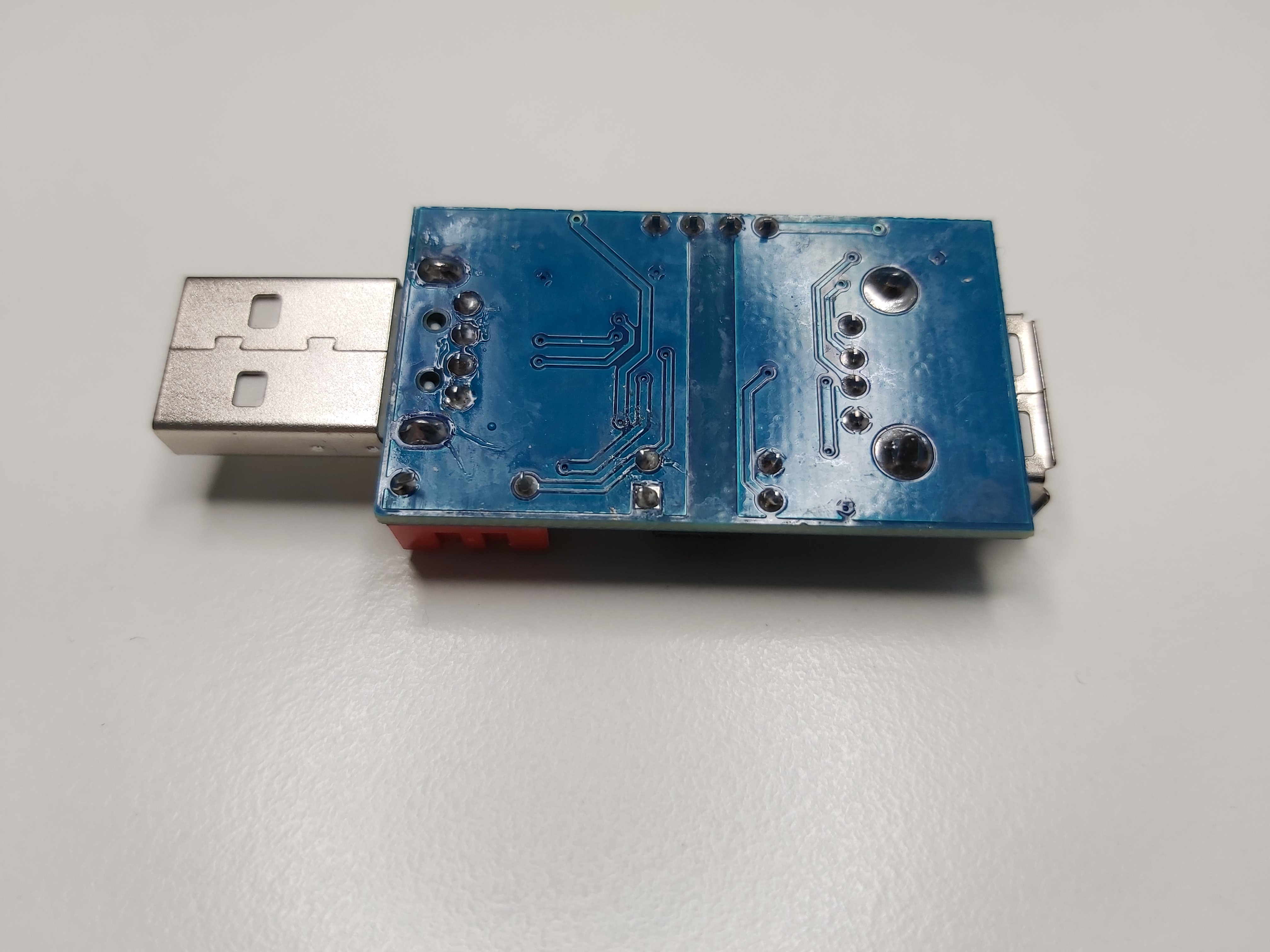
12 Comments
Tomi Engdahl says:
Here is another USB isolator. This has built-in USB hub so has four output and no need for manual USB speed selection:
Quad USB Isolator USB HUB Isolation Module Coupling Protection Board ADUM3160 Module Board from Electronics on banggood.com
https://banggood.app.link/fZnX5YGXB6
Tomi Engdahl says:
Link to cased USB isolator
USB to USB ADUM3160 Isolador Isolation Digital Signal Audio Power Converter Isolator Board Module Board from Electronics on banggood.com
https://banggood.app.link/HB9SfCSXB6
Tomi Engdahl says:
USB and ground loops
https://www.epanorama.net/blog/2013/08/15/usb-and-ground-loops/
Tomi Engdahl says:
Introducing the Reflowable USB 3.0 Isolator Chip — A Digital Isolator Speed Breakthrough
https://www.eetimes.com/introducing-the-reflowable-usb-3-0-isolator-chip-a-digital-isolator-speed-breakthrough/
The digital signal isolator is essential for medical equipment to prevent patients and operators from electric shock, a requirement of the international standard IEC60601-1. However, high-speed digital signal isolator chips with a speed over several gigabits per second (Gbps) that can be mounted on medical equipment boards with surface-mount technology (SMT) reflow process has not been a market option — until now.
For example, USB interfaces are adopted into the medical equipment but have been restricted to a 12-Mbps speed for a long time. In recent years, many medical equipment applications require USB 3.0 (SuperSpeed, 5 Gbps) interfaces for high-definition high-resolution image acquisition and other usage requiring high-bandwidth signal transmission. However, there have been no reflowable USB 3.0 isolator chips for medical equipment available in the market.
With utilizing semiconductor laser technology, which is totally new at the isolator design level, we developed digital isolators that can handle a speed over several gigabits per second. This is different from the traditional isolator/optocoupler technologies, which utilize LED, inductive coupling, capacitive coupling, or other methods. Semiconductor lasers enable a new approach that covers much higher speeds of at least 25 Gbps. This upper speed limit can be enhanced further with ever-improving laser technology. In this new solution, semiconductor lasers and photodiodes are used for high-speed optical signal emission and reception. Laser drivers and photodiode amplifiers are also incorporated.
Typically, optocouplers (with LED coupling) cover up to 10 Mbps, traditional digital isolators (capacitive/inductance coupling) cover up to 1,000 Mbps, and the new digital isolators (laser coupling) can reach 10,000 Mbps (10 Gbps).
Advanced Photonics is going to serve the medical equipment market by providing various high-speed medical-grade isolators. Many digital interfaces used in medical equipment nowadays need isolators that can handle over 3 Gbps per differential lane.
There are already solid demands for 5-Gbps USB 3.0 and up to 6-Gbps/lane HDMI 1.0-2.0 interfaces in the medical equipment industry, and more demands for higher-speed isolators are expected to appear in the near future.
As of August 2020, we cannot find a chip-type isolator with a speed over 3 Gbps that can be mounted on boards as an electronic component. Instead, there is the USB 3.0 and the HDMI isolator box, which are too large and not suitable to be mounted on medical equipment boards.
The chip’s smaller leakage current is critical for medical equipment usage. This is due to the small input to output capacitance of less than 0.32 pF (the lower limit of the LCR meter used in the measurement). This value is much smaller than traditional digital isolators and optocouplers. The small capacitance is achieved in large part due to semiconductor laser technology and our patent-pending, light-coupling method.
Tomi Engdahl says:
EEVblog #279 – How NOT To Blow Up Your Oscilloscope!
https://www.youtube.com/watch?v=xaELqAo4kkQ
Tomi Engdahl says:
Protect Systems in Harsh Environments with Isolated USB Repeaters
May 6, 2022
Sponsored by Texas Instruments: You can protect your industrial designs with low-emissions, USB 2.0-compliant 480-Mb/s isolators while using pre-emphasis and equalizer settings to compensate for channel loss.
https://www.electronicdesign.com/tools/learning-resources/whitepaper/21239100/texas-instruments-protect-systems-in-harsh-environments-with-isolated-usb-repeaters?utm_source=EG+ED+Analog+%26+Power+Source&utm_medium=email&utm_campaign=CPS220505062&o_eid=7211D2691390C9R&rdx.ident%5Bpull%5D=omeda%7C7211D2691390C9R&oly_enc_id=7211D2691390C9R
The Universal Serial Bus (USB) increasingly finds use in industrial applications, where it can support software upload and configuration, assist with diagnostics and maintenance, and connect peripheral devices. However, USB was defined as a consumer-electronics interface, and it doesn’t inherently tolerate the noise disturbances, ground bounce, and ground potential differences found in industrial environments.
To overcome such limitations and meet the needs of a broad spectrum of factory-automation, medical-equipment, and power-delivery applications, you can implement a galvanically isolated USB interface. However, you will need to ensure that your interface complies with EMI standards and minimizes inter-symbol interference (ISI).
Texas Instruments offers a variety of isolated USB solutions that integrate a galvanic isolation barrier into a USB interface (Fig. 1). The company’s ISOUSB211 and ISOUSB111 isolated USB repeaters each provide high-voltage protection and enhanced signal integrity for USB 2.0 interface systems.
Both devices support charging-downstream-port (CDP) advertising, role-reversal, and automatic speed detection, which allows the same part-number device to be used for host, peripheral, hub, or cable isolation. In addition, both come in reinforced and basic isolation options, offering isolation voltages of 5,700 VRMS and 300 VRMS, respectively, in accordance with UL 1577.
Available in an SSOP-28 package, the ISOUSB211 supports the 480-Mb/s High Speed (HS) mode in addition to the 12-Mb/s Full Speed (FS) and 1.5-Mb/s Low Speed (LS) modes. The ISOUSB211 meets HS signal-quality requirements without the need for an external crystal oscillator or clock input. Its incremental jitter is low enough to meet USB eye-diagram specifications without retiming.
Electromagnetic-compatibility (EMC) performance is a key consideration when choosing a USB isolator for industrial applications. Figure 2 shows the emissions performance of the ISOUSB111 compared with that of a competitive device when used in a test setup with a 1-m cable between a PC and a USB drive. At one point, the ISOUSB111 offers emissions more than 20 dB lower than that of a competitive device, which fails to achieve compliance with the CISPR 32 Class B standard.
Pre-emphasis and Equalization
A USB isolated repeater generates a fresh copy of its input signal across its isolation barrier, and input-signal jitter will appear at the repeater’s output. The repeater itself includes on-off keying circuitry that can contribute additional jitter. Total jitter on the repeater’s output is the root-sum-squared value of the input jitter and the jitter generated by the isolation circuitry.
You can minimize the adverse effects by choosing a repeater that includes transmitter pre-emphasis and receiver equalizer capabilities. These play a key role in improving signal integrity and reducing the frequency-dependent ISI caused by PCB trace losses.
However, if you’re using the repeater in a system that has differential trace loss greater than 2 dB, you should try to distribute the loss on both the upstream and downstream sides of the repeater. Then, use both receiver equalization and transmitter pre-emphasis simultaneously to compensate for the system loss.
Tomi Engdahl says:
ADUM4166
5.7kV rms Digital Isolator for Isolated USB 2.0 High Speed (Downstream Clock Input)
https://www.analog.com/en/products/adum4166.html?ADICID=EMAL_WW_P328165_MIX-NPI-PN_1089&deliveryName=DM23871#product-overview
USB 2.0 signaling with automatic detection of low, full, and high speed connections
1.5 Mbps, 12 Mbps, and 480 Mbps data rates
Bidirectional USB isolator for upstream or downstream ports
Redriving and high speed data retiming for input jitter removal and an open eye
Flexible clock input options
4.5 V to 5.5 V VBUSx or 3 V to 3.6 V operation on each side
21 mA typical idle, low or full speed mode supply current
48 mA typical idle, high speed mode supply current
Operating temperature range: −55°C to +125°C
20-lead, wide-body, increased creepage SOIC_IC package with 8.3 mm creepage and clearance
Tomi Engdahl says:
USB Power Isolator Keeps Smoke In
https://hackaday.com/2022/10/12/usb-power-isolator-keeps-smoke-in/
Anyone who’s done an electronics project knows the most important part of any good design is making sure to keep the magic smoke inside of all of the components. There are a lot of ways to make sure the smoke stays in there, but one of the most important is making sure that the power supply is isolated. If you’re using a USB port on a computer as your power source, though, it can be a little more complicated to isolate it from the computer.
https://github.com/wagiminator/ATtiny412-USB-Power-Isolator
For some applications, a galvanically isolated power supply is required to avoid ground loops or short circuits, or simply for mutual protection. The USB Power Isolator offers the possibility of a simple isolation (2.5kV) of the 5V rail of a USB power adapter with an unregulated output and a maximum continuous current of 1A. The USB Power Isolator isolates the power rail only, for full isolation including data lines take a look at the ADuM3160 USB Isolator.
Tomi Engdahl says:
https://www.facebook.com/groups/DIYAudio/permalink/5940551679343962/
Hello everyone,
What could replace Raspberry Pi to stream music form Spotyfi And Tidal. I need less noisy USB than Raspberry Pi to plug it to DAC.
The Pi is an excellent streaming source but indeed noisy and equipped with a very high jitter level clock. The trick is to use some kind of galvanic barrier and/of fifo with reclocker like this one: https://www.audiophonics.fr/en/dac-and-interfaces-for-raspberry-pi/ian-canada-fifopi-q2-ultimate-reclocker-module-fifo-pcm-32bit-768khz-dsd1024-dop-p-13823.html
Tomi Engdahl says:
USB to USB Isolated Digital Signal Audio Power Isolator ADUM3160
https://www.aliexpress.com/item/1005005672006351.html?src=google&src=google&albch=shopping&acnt=897-548-8760&slnk=&plac=&mtctp=&albbt=Google_7_shopping&gclsrc=aw.ds&albagn=888888&ds_e_adid=&ds_e_matchtype=&ds_e_device=m&ds_e_network=x&ds_e_product_group_id=&ds_e_product_id=en1005005672006351&ds_e_product_merchant_id=765095345&ds_e_product_country=FI&ds_e_product_language=en&ds_e_product_channel=online&ds_e_product_store_id=&ds_url_v=2&albcp=19366796298&albag=&isSmbAutoCall=false&needSmbHouyi=false&gad_source=1&gclid=CjwKCAiAvoqsBhB9EiwA9XTWGRh7OAU7-WDGWau-XhIPGo_yZJGiymauOPKZqrAHw55Z388zcycJ_BoCMC8QAvD_BwE&aff_fcid=f5b87cd6c33743248a79e60b2a14d2cf-1703105266316-08392-UneMJZVf&aff_fsk=UneMJZVf&aff_platform=aaf&sk=UneMJZVf&aff_trace_key=f5b87cd6c33743248a79e60b2a14d2cf-1703105266316-08392-UneMJZVf&terminal_id=4d1c99df9fcc415ba479629458faae7e&afSmartRedirect=y
Tomi Engdahl says:
https://archimago.blogspot.com/2021/09/measurements-usb-isolation-with.html?m=1&fbclid=IwY2xjawEbL_VleHRuA2FlbQIxMQABHVoGtPKEHIV0wA8PQpMDGGjZTdQ9j8QQjnWIIuJMcFQCXTvtmaeqz5kWVA_aem_sghnUM44JLPBRkHM3j3llQ
Tomi Engdahl says:
How To Stop Studio Monitor Noise (Computer Noise, Hiss, Buzz, Hum)
https://m.youtube.com/watch?v=kyc_ICM7E_w